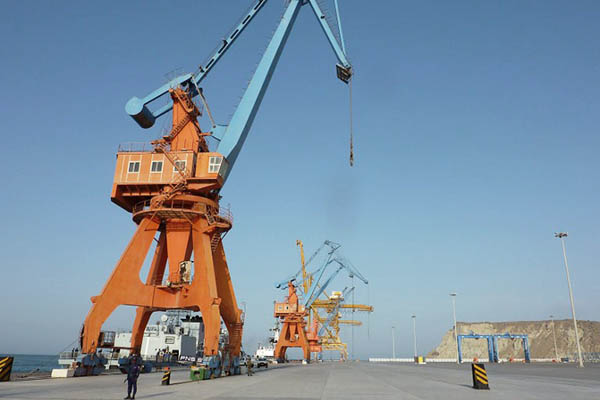
The port of Gwadar in Balochistan province. Sarah Titterton—AFP
Pakistan and India are both missing the big picture.
Sartaj Aziz, Pakistan’s de facto foreign minister, recently focused on the greater warmth between India and the United States as a military development and stated: “Increasing defense cooperation between India and the U.S. will disturb the regional balance, both conventional and strategic.” On the other hand, he described the Pakistan-U.S. relationship as “historically marked by highs and lows,” glossing over a whole period of America’s Cold War backing of Pakistan against India while helplessly complaining about the latter’s preference for war.
As daily Dawn noted, “the current bad patch is primarily an outcome of American concerns about inadequate action against terrorist groups like the Afghan Taliban, Haqqani network and Lashkar-e-Taiba.” The most significant part of Aziz’s statement was the military nature of the description of Pakistan-India relations and its presumption of war. As the rest of the world sees it, it is not in the interest of either country to look at South Asia as a theater of permanent conflict. At least an elected civilian government is not expected to do so.
There is a balance of nuclear deterrence between Pakistan and India, which can be upset when one state prospers economically and spends more on weapons. Pakistan must get itself out of this bind or it will spend itself out of the competition, hence the international insistence that India and Pakistan change the nature of their competition. But such “normal” expectations received a setback when both states recently saw trade as a security threat.
Two trade corridors are going to come into existence in the region. This is a historical development in a part of the world given to conflict on state borders. It is sad that India sees the China-Pakistan Economic Corridor as a threat, and Pakistan equally describes the development of the Chabahar Port and Delaram-Zaranj Highway in Iran as “hostile encirclement.” The two parallel trade routes are game changers of peace and prosperity in the region.
If there is any lesson to learn for Pakistan it is that of China. Its trade with India is worth $100 billion, its pledged bilateral exchange with Iran is worth $200 billion, and it remains the biggest investor in Afghanistan’s northern oil and gas fields and centrally located copper deposits, to say nothing of the $46 billion pledged to Pakistan. The joining of the two potential trade arteries can bring peace as nuclear proliferation never can.
